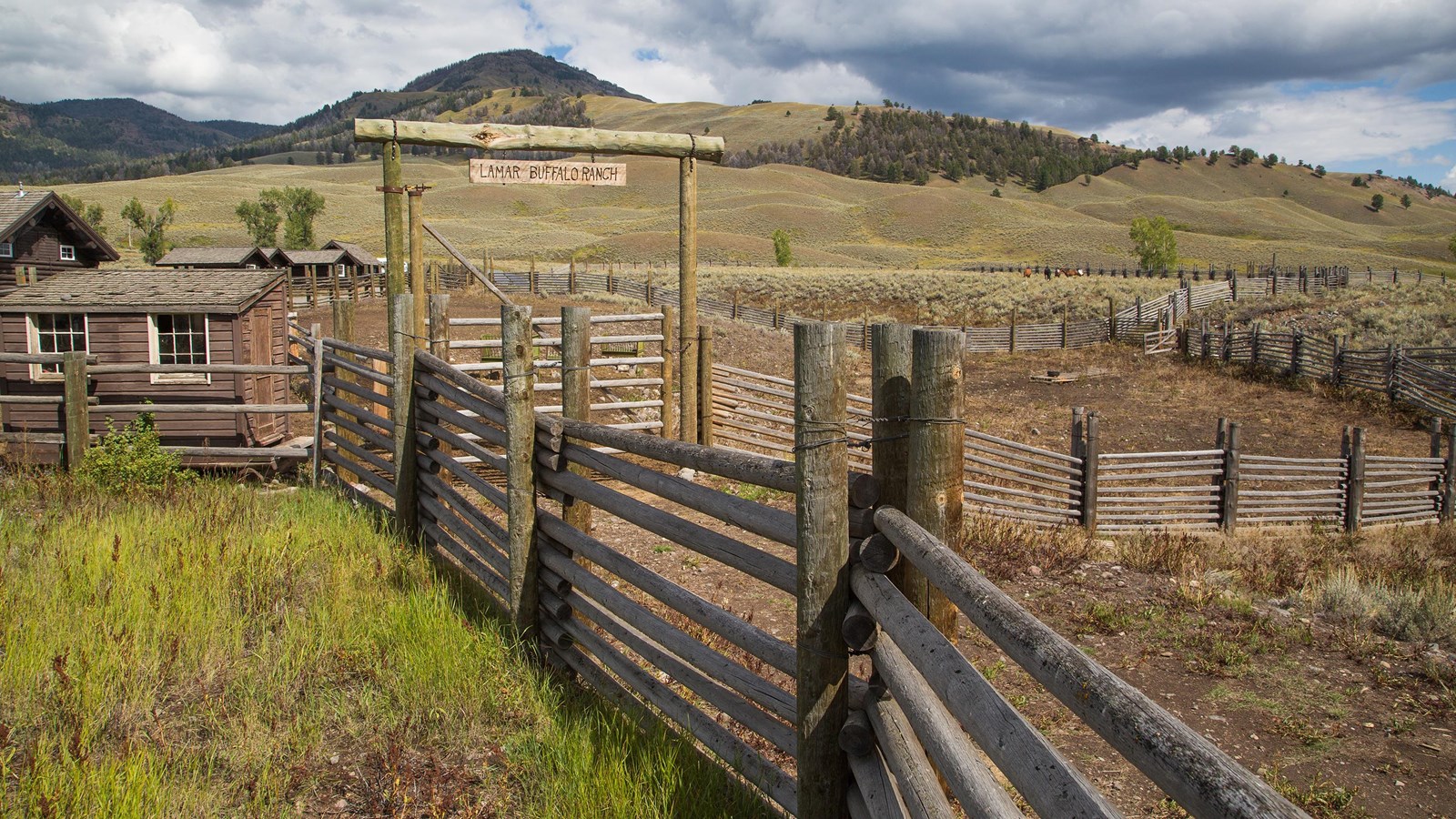Last updated: December 30, 2024
Place
Lamar Buffalo Ranch: Birthplace of Wildlife Conservation

NPS / Neal Herbert
The Lamar Buffalo Ranch occupies a significant place in the history of American wildlife conservation and management. It was added to the National Register of Historic Places in 1982.
History
The extermination of bison throughout the west in the 1800s nearly eliminated them from Yellowstone. Even after the park was established in 1872, poachers faced few deterrents. With only 25 bison counted in the park in 1901, Congress appropriated $15,000 to augment the herd by purchasing 21 bison from private owners. As part of the first effort to preserve a wild species through intensive management, these bison were fed and bred in Lamar Valley at what became known as the Lamar Buffalo Ranch.
As the herd grew in size, bison were released to breed with the park’s free-roaming population. Bison from the ranch were also used to start and supplement herds on other public and tribal land. Today the Yellowstone bison population numbers in the thousands. It’s one the largest populations in North America and among the few that is genetically pure because it has not been interbred with cattle.
A program to raise bison like domestic cattle in Yellowstone may seem incongruous and unnecessary in retrospect, but the buffalo ranch stands as a reminder that today’s well-intended wildlife management policies may have unintended consequences and be overturned by changing values and advances in ecological knowledge.
As listed on the National Register of Historic Places, the Lamar Buffalo Ranch Historic District includes five buildings: a ranger station, constructed in 1915 as the buffalo keeper’s residence; a pole fenced corral built and rebuilt from 1915 to the 1930s; a log barn for hay and horses (1927); a bunkhouse (1929); and a residence used for the assistant buffalo keeper that was moved to the ranch in 1938 from Soda Butte (where it had probably been a ranger station). The vegetation around the ranch is mostly sagebrush and nonnative grasses that were planted during the period of hay cultivation. Remnants of irrigation ditches, fencing, and water troughs remain throughout the ranch.
Education & Sustainability
Today Expedition Yellowstone and Yellowstone Forever Institute use the Lamar Buffalo Ranch as a base camp for educational field classes and seminars. In keeping with its rustic character, the Lamar Buffalo Ranch remains off-the-grid. Thanks to partnerships with Yellowstone Forever, Sharp, and Toyota, a 44 kw photovoltaic array provides power to the ranch. The solar panels are tucked out of site so as not to affect Lamar Valley’s panoramic views. As a pilot project, Toyota provided 208 used hybrid car batteries to store power on site. It's hoped this technology will provide a new alternative for delivering power to remote locations throughout the world.
These partnerships enable the National Park Service to use the buffalo ranch as a model for environmental stewardship. Future plans call improving the energy efficiency of the historic buildings with things like low-flow water fixtures, on-demand hot water, and more energy-efficient windows (all while preserving the integrity of the original structures). Eventually, we hope to remove all propane appliances so the ranch can operate entirely free of fossil fuels.
The Future of Bison Management
The protection and recovery of bison in Yellowstone is one of the great triumphs of American conservation. Efforts centered at the Lamar Buffalo Ranch succeeded in bringing this species back from the brink of extinction. Today we face the challenge of maintaining a wild, migratory population of bison in a modern landscape. Read more about the success and controversy surrounding these efforts.
